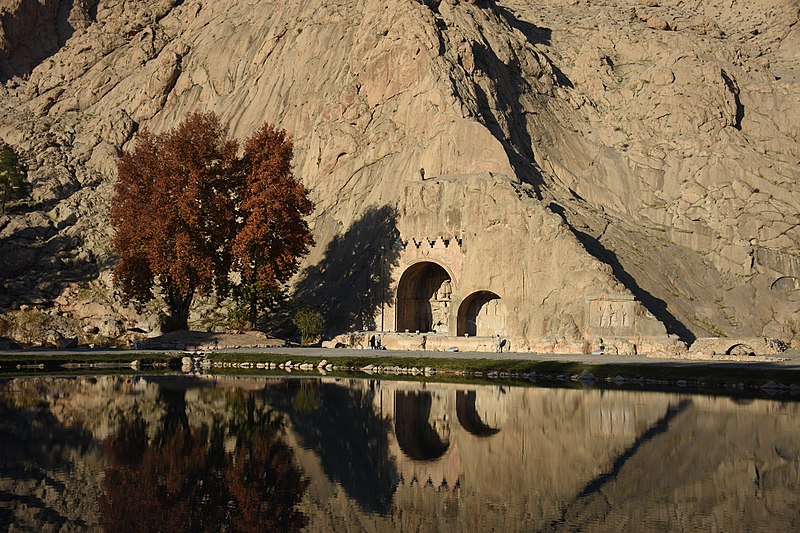
Taq bostan
Taq-e Bostan is a site with a series of large rock reliefs from the era of the Sassanid Empire of Persia (Iran), carved around the 4th century CE.
This example of Persian Sassanid art is located 5 km from the city center of Kermanshah. It is located in the heart of the Zagros mountains, where it has endured almost 1,700 years of wind and rain. Originally, several natural springs were visible next to and below the reliefs and arches, some of which are now covered. Springs next to the reliefs still feed a large basin in front of the rock. The site has been turned into an archaeological park and a series of late Sassanian and Islamic column capitals have been brought together (some found at Taq Bostan, others at Mount Behistun and Kermanshah).
The carvings, some of the finest and best-preserved examples of Persian sculpture under the Sassanids, include representations of the investitures of Ardashir II (379–383) and Shapur III (383–388). Like other Sassanid symbols, Taq-e Bostan, and its relief patterns accentuate power, religious tendencies, glory, honor, the vastness of the court, game and fighting spirit, festivity, joy, and rejoicing.
Sassanid kings chose a beautiful setting for their rock reliefs along a historic Silk Road caravan route waypoint and campground. The reliefs are adjacent to sacred springs that empty into a large reflecting pool at the base of a mountain cliff.
Taq-e Bostan and its rock relief are one of the 30 surviving Sassanid relics of the Zagros mountains. According to Arthur Pope, the founder of the Iranian Art and Archeology Institute in the United States of America, "art was characteristic of the Iranian people and the gift which they endowed the world with."
